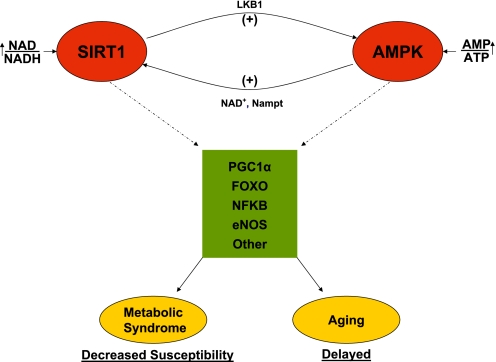Fig. 7.
The hypothetical SIRT1/AMPK cycle and its significance. A decrease in energy state or activation of AMPK by other means leads to activation of SIRT1, perhaps by increasing NAD+ or the NAD/NADH ratio (8) and/or the activity of Nampt (23). SIRT1 then deacetylates and activates LKB1, which in turn activates AMPK. Alternatively, these events could be set in motion by factors that primarily increase SIRT1. The joint activation of SIRT1 and AMPK allows for the concurrent deacetylation and phosphorylation of the listed target molecules and presumably others. The predicted result would be a decreased susceptibility to metabolic syndrome-associated disorders and possibly delayed aging. Not shown is that a primary downregulation of SIRT1 or AMPK would presumably have opposite effects and predispose to the metabolic syndrome and accelerated aging.

